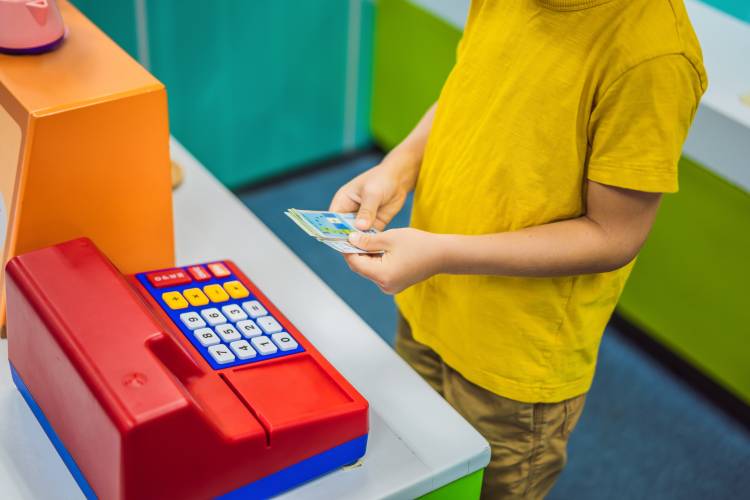Financial education for children
Financial education for children is fundamental in creating young people and adults with a solid and secure base.
child care
Share

The learning capacity of children is astonishing. Their minds are like sponges that absorb all of the knowledge that is placed within their reach and that will be of great help to many of them when they are older. That’s why financial education should not be ignored.
According to the latest PISA report from the Organisation for Economic Co-operation and Development (OECD), carried out among 15-year-old pupils, one in every four Spanish adolescents does not have any idea about finance. In adults, this pattern is similar, and despite the average score obtained from the financial literacy assessment being 6 out of 10, the results show that almost half of the population (46%) believe their financial literacy is “low” or “very low”. In addition, just 58% of the Spanish population understand the concept of “inflation” and more than 75% admit that they should improve their financial knowledge to optimise the management of their own personal finances.
Why is financial education important?
Money is present in almost all of the day-to-day activities that we carry out, and children have a consumption pattern which is increasingly marked by advertising and the media, so it is important to educate them financially, teaching them the importance of managing and saving their money.
Numerous studies support the idea that a better financial culture among the population will contribute to improving their levels of saving, planning for retirement and a better quality of life. Having this education from an early age helps in making better decisions and being more knowledgeable in this area at each point in life. It also helps to make better borrowing choices and assume lower levels of debt throughout life.
How to teach children to manage and save money
- Lead by example: we should teach them not to buy things by impulse and that we can’t spend money without any limits. The best way to do this is to lead by example.
- Differentiate between expenses and income: it seems silly, but this is fundamental so that they understand how the economy works. It would be good to teach them how to create a personal savings budget and control of expenses so they learn to prioritise.
- Cash machines don’t give money for free: we should explain to them from being very young that the cash machine is not a magic box that prints money. It is important for them to learn the value of things, that to buy them you have to work and that this sacrifice is what enables us to have money, but always in a conscious way.
- Pocket money: giving them money each week so they learn from being very young how to manage it is a good way to generate the habit of spending it responsibly. Handling their own money will give them the necessary skills so they can be financially independent, patient and organised.
- Save and set goals: a good way of learning to save is for them to have an incentive. If they want to buy a toy, for example, we can teach them that they have to save some money each month until they have saved up the total cost of that toy. It is a way of managing money and not spending without any control.

Interactive applications
In recent years, there has been an increase in the number of applications to help children learn about finances. Below we suggest the some of them:
- Life Hub: in a fun way, it teaches children and teenagers about financial education through 24 modules adapted to different age ranges from ages 3 to 18. In turn, these are divided into three sections: money management, entrepreneurial spirit and life management. It is very simple to use and can be used on any computer, telephone or tablet.
- Goalsetter: it motivates children to achieve their goals by saving. It has three categories: saving for the future, sharing with others and experiencing things that matter.
- Banqer: offers primary-aged children practical experiences about managing their finances, while it enables them to manage income, expenses and future budgets via games. Designed to be used in a fun way in the classroom.
- Homey: jobs can be fun for children thanks to this application that motivates them with economic rewards each time they complete the task they have been assigned. Homey enables paid responsibilities and work to be assigned to each family member and for them to manage the money they earn. The idea is that the child pays their earnings into their own bank account and only spends it when they achieve the goal.
10 reasons to encourage financial education
- It enables people to be better educated when it comes to making decisions about their finances, their future and their financial planning.
- It helps people to reach financial objectives at any stage of their life.
- It improves the financial situation of families and their assets.
- It generates proper saving habits in families, which enables them to have a better quality of life.
- It helps consumers to manage their income and expenses, save and invest more effectively.
- It provides tools to prevent potential fraud from scams and cyber scams.
- It contributes to the proper working of markets and the economy.
- It encourages financial planning of consumers and improves their debt management.
- It becomes a tool to promote economic growth, confidence and stability.
- It helps to complement financial regulation to protect investors effectively.






